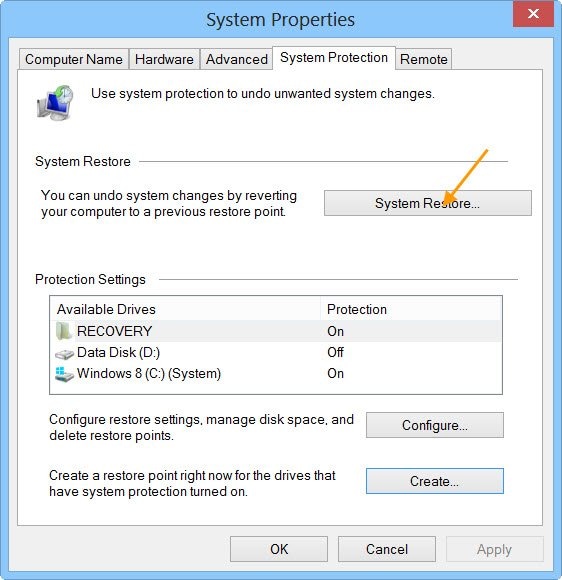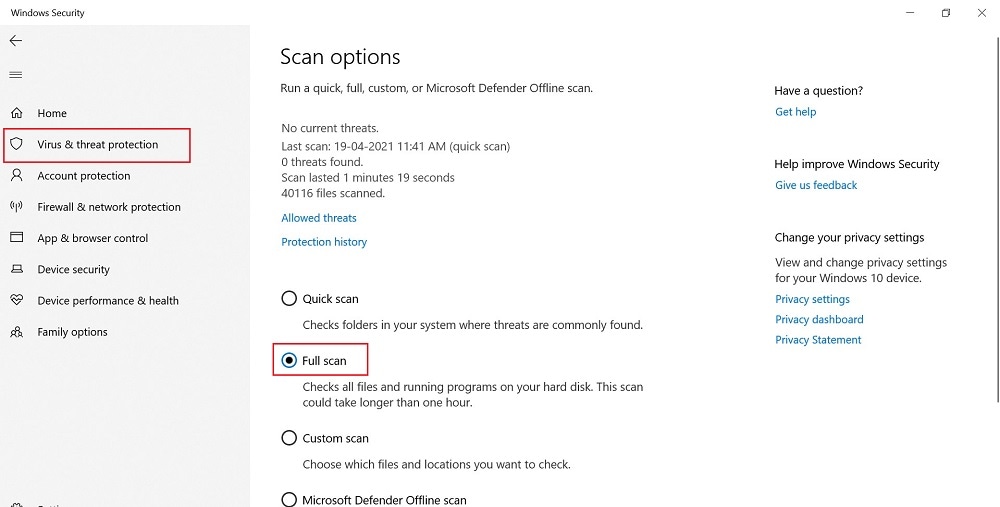How to Fix File System Error in Windows 10
File System Errors are essentially disk-related errors that may be due to corrupt files, bad sectors, disk integrity corruption, file execution policies, etc. These errors may prevent you from accessing or opening files. These may be encountered in files such as PDF, images, documents, movies, etc. This may appear in the form of error prompts such as C:\Test Program\Test.exe File system error (-2018375670). Numbers like 1073741819 and 2147219200 may also appear.
Each of these errors may mean different causes of problems. 2018375670 is due to a disk-related error from bad sectors and disk integrity. 1073741819 is due to User Account Control Settings' Registry values being altered or simply corrupted System Files. Lastly, 2147219196 is due to Universal Windows Platform (UWP) application errors within the system.
Part 1. How to Fix File System Error on Windows 10
If you ever encountered any of these errors, we’ve provided 7 solutions to fix a file system error on Windows 10. Have a look below:
Method 1. Run System Restore
System Restore is a built-in feature of Windows that allows users to restore their system to its original state or at a certain point. Windows makes restore points from which you can restore your system. For Windows 10, this feature is not turned on by default, and you may need to turn it on first to use it. This special feature is used by many users to resolve system errors and other issues. Here is a guide on how to perform this:

Step 1. Type in sysdm.cpl in the Search bar and click OK.
Step 2. Go to the System Protection tab and select System Protection.
Step 3. A pop-up will appear asking you to pick the System Restore Point. Select the System Restore Point and complete the process by following the instructions prompted.
Method 2. Run Check Disk.
Check Disk Utility is a Windows feature that allows you to fix any hard drive errors. It does this by performing a thorough scan of your entire hard drive to figure out where the problem is coming from. It also fixes these issues for you. Follow the instructions below to perform this:
Step 1. Press the Windows key + X on your keyboard or right-click on the Start button and select Command Prompt (Admin). You may also type in cmd in the Search bar, right-click on Command Prompt and select Run as Administrator.
Step 2. Select Yes to allow your device to make changes. After this, the Command Prompt window will pop up, and you can start typing in your commands.
Step 3. Type in the command below to run Check Disk Utility or chkdsk, press Enter after typing in the command.

chkdsk : /f
NOTE: Remember to place a space before "/f"
Step 4. If the prompt Chkdsk cannot run because the volume is in use by another process. Would you like to schedule this volume to be checked the next time the system restarts? (Y/N) appears, enter Y to schedule the Disk Check on your next reboot.
Method 3. Run System File Checker & DISM.
System File Checker or SFC is a built-in tool in Windows operating systems that allows users to detect and fix any corrupted system files within the computer. The SFS is accessed through performing commands on Command Prompt. Carefully follow the instructions listed below:
Step 1. Press the Windows key + X on your keyboard or right-click on the Start button and select Command Prompt (Admin). You may also type in cmd in the Search bar, right-click on Command Prompt and select Run as Administrator.
Step 2. Select Yes to allow your device to make changes. After this, the Command Prompt window will pop up, and you can start typing in your commands.
Step 3. Type in sfc /scannow and press Enter to run the System File Checker.
Step 4. Once the scan is finished, reboot your PC. You may use FixWin software to run System File Checker in just one click. Just go to the Command Prompt (Admin)
Step 1. Press the Windows key + X on your keyboard or right-click on the Start button and select Command Prompt (Admin). You may also type in cmd in the Search bar, right-click on Command Prompt and select Run as Administrator.
Step 2. Select Yes to allow your device to make changes. After this, the Command Prompt window will pop up, and you can start typing in your commands.
Step 3. Type the following commands, pressing Enter after every line.
Dism /Online /Cleanup-Image /CheckHealth
Dism /Online /Cleanup-Image /ScanHealth
Dism /Online /Cleanup-Image /RestoreHealth
Step 4. Once the DISM is finished with the process, reboot your PC.
Method 4. Run Malware/Virus Scan Of Your Entire PC System
If you are encountering the File System Error on Windows 10, then malware or virus can be the issue. Sometimes the malware or virus may attack the software of your PC, and this, in turn, causes a large of errors in your system. The malware may often be responsible for deleting the dll files. So, it's always a good practice to conduct a frequent malware or virus scan of your system so that it can always be free from virus attacks. To run a quick scan on your PC, you must follow the below-mentioned steps:
Step 1. Go to the Start menu and enter Defender in the search box.
Step 2. Click on Windows Defender/Security to run the tool, and in the left panel, tap on the shield icon (Virus & threat protection).
Step 3. Now, a new window will appear. Here, click on the Scan options, which is located just below the Quick Scan option.
Step 4. Check the Full Scan option below to run a complete system malware/virus scan.

Method 5. Set Windows 10 Theme to Default
If running a malware/virus scan didn't work to solve the issue, then there might be another reason behind the issue. Sometimes, the unsaved Windows 10 theme may cause the file system error to occur. So, in order to fix it, you can consider setting the Windows 10 theme to the default. For setting the Windows 10 theme to default, all you need to do is to:
Step 1. Right-click on your desktop and click on Personalize option from the drop-down list.

Step 2. Under the Personalization window, click on Themes on the left side menu and then click on Settings under Themes.

Step 3. Now, select Windows 10 under Windows Default Themes.

Step 4. Finally, Reboot or Restart your PC to save the changes. By the end of this step, your issue must be resolved. If the issue still continues to exist, try fixing it with the help of the next solution.
Method 6. Change Sound Scheme of Your PC System
The current sound scheme of your PC system can cause the File System Error on Windows 10. So, to resolve the issue, try changing the sound scheme of your PC. For changing the Sound Scheme, you must follow a series of steps that involve:
Step 1. Right-click on the Volume symbol at the lower-right area of your desktop screen.
Step 2. From the drop-down list, click on Sounds.

Step 3. Now, change Sound Scheme to Windows Default and click on Apply.

Step 4. Finally, tap the OK button to save all the changes and restart your PC.
After restarting your PC, you can now check if the issue is fixed or not! If yes, then it's good to go but if the issue still exists, try the next solution.
Method 7. Reset Windows Store Cache
Another proven way to fix File System Error on Windows 10 is by resetting Windows Store Cache. In order to reset Windows Store Cache, you must follow the below-mentioned steps:
Step 1. Press Windows + R key to launch the Run program.
Step 2. Enter WSReset.exe without quotes in the Run program and hit on OK button.

Step 3. After the Store reset process, restart your PC and check whether the issue is fixed or not.
Conclusion:
With all these solutions, hopefully, you find one that will solve your File System Error problems. Just remember that when running commands, it's essential to type in the commands correctly for them to work. Failure to do so may result in unexpected errors.
Partition Recovery
- Partition Management
- Solve Partition Problems
- Partition Tips











 ChatGPT
ChatGPT
 Perplexity
Perplexity
 Google AI Mode
Google AI Mode
 Grok
Grok
























David Darlington
staff Editor